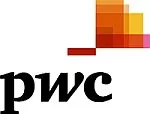Amendments to IAS 38 and IAS 16 on revenue based Amortisation
The IASB has amended IAS 16, Property, plant and equipment and IAS 38, Intangible assets to clarify when a method of depreciation or amortisation based on revenue may be appropriate. The amendment to IAS 16 clarifies that depreciation of an item of property, plant and equipment based on revenue generated by using the asset is not appropriate.
The amendment to IAS 38 establishes a rebuttable presumption that amortisation of an intangible asset based on revenue generated by using the asset is inappropriate. The presumption may only be rebutted in certain limited circumstances:
- where the intangible asset is expressed as a measure of revenue; or
- where it can be demonstrated that revenue and the consumption of the economic benefits of the intangible asset are highly correlated.
It is unlikely that the amendment to IAS 16 and IAS 38 will have a significant impact as few entities use a revenue-based approach to depreciation. However, entities with intangible assets related to service concession arrangements or intangible assets arising from programme rights in the entertainment and media industry might see a significant impact from the amendment.
Leasing re-deliberations
The IASB and FASB ('the Boards') joint meeting focused on the definition of a lease in May. When determining if a contract contains a lease, an entity should assess whether: i) fulfilment of the contract depends on the use of an identified asset and ii) the contract conveys the right to control the use of the identified asset.
Identified asset
The Boards agreed that fulfilment depends on the use of an identified asset when the supplier has no practical ability to substitute an alternative asset or the supplier would not benefit from substituting. There was some concern about how a customer could assess whether the supplier can benefit from substitution. The Boards supported that if it is impractical to determine whether a supplier's right of substitution is substantive, the customer should assume that substitution rights are not substantive.
Right to control the use of an identified Asset
The Boards agreed that this assessment should focus on the ability to affect the potential cash flows to be derived from use of the asset. The staff presented five examples on how to perform the analysis. The Boards' members expressed concerns about how the examples illustrate the concept. The IASB staff will likely work on the examples. The next steps by the FASB are unclear.
The IASB still has a number of topics to be discussed before issuing a final standard.
Conceptual Framework discussions
The IASB made significant progress on their discussion on the Conceptual Framework in May. The next due process step is an exposure draft which is expected at the end of this year. The discussions focused on the definitions of the elements, recognition and modifications to chapters 1 and 3 of the existing Framework.
The key tentative decisions were as follows:
- There was broad agreement to move forward with the definitions of assets and liabilities as proposed in the Discussion Paper. In particular, the notion that an inflow or outflow needs to be 'expected' will be removed from the existing definitions.
The Framework should describe factors to consider when determining whether an asset or liability should be recognised rather than developing criteria.
- Chapter 1 should be amended to 'increase the prominence' of stewardship in the overall objective of financial reporting.
- 'Reliability' will not be reintroduced as an additional qualitative characteristic or an aspect of either relevance or faithful representation.
- The notion of prudence will be reintroduced, described as 'the exercise of caution when making judgments under conditions of uncertainty'.
IASB research project on equity accounting
The IASB discussed the project plan for further research into equity accounting. The project is in response to the 2011 Agenda Consultation in which some respondents expressed concerns or identified practice problems with equity accounting.
The objective of the research phase is to identify the issue and understand the needs of users before moving forward with further proposals.
The plan already identifies some possible alternatives to address the practice issues including:
- simplifying the equity method;
- retaining the current equity method as set out in IAS 28;
- fair value; and
- cost.
The next step is discussions with the Accounting Standards Advisory Forum next month.
IC takes on uncertain tax positions
The IFRS Interpretations Committee (IC) decided to move forward discussions on uncertain positions. The issue arose from a submission where the IC was asked to clarify the recognition threshold of an asset associated from an uncertain tax provision which might arise when a payment is made to the tax authority.
The submission questioned whether to apply a 'probable' threshold (IAS 12), or a 'virtually certain' threshold (IAS 37). The IC observed that IAS 12 provides adequate guidance on the topic, implying that a 'probable' threshold should be used. The IC, however, will add the issue to the agenda with an objective to clarify the guidance and reduce diversity in practice.
The content of this article is intended to provide a general guide to the subject matter. Specialist advice should be sought about your specific circumstances.

